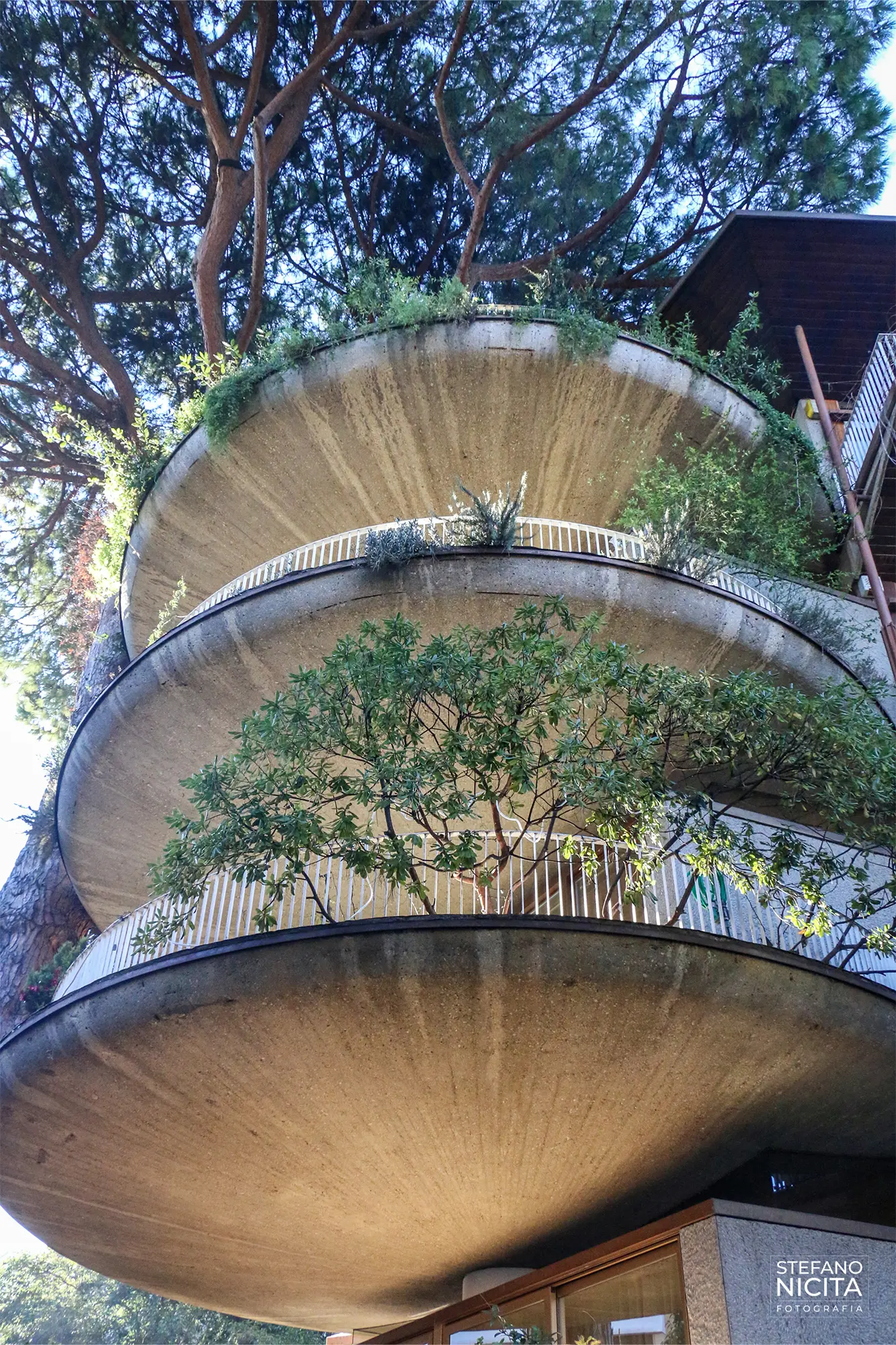
The Roman Palazzina
Northern Rome - Rome Center - Southern Rome
Parioli
Our tours offer an in-depth look at the palazzina romana—a distinct urban housing typology rarely documented outside of Italy, yet essential to understanding Rome’s twentieth-century architecture. Emerging between the 1920s and 1960s, the palazzina redefined middle-class living through a model that combined density with human scale, and modernist clarity with Mediterranean warmth.
Far from a repetitive formula, it became a site of architectural experimentation and invention. From Moretti’s sculptural Casa Il Girasole to Monaco and Luccichenti’s nautically inspired facades and Ridolfi’s rigorous formalism, the palazzina revealed surprising expressive potential.
Architects blended modernist clarity with Mediterranean nuance, animating facades through loggias, balconies, and rhythmic composition. Interiors echoed this care, with marble-clad entrances, elegantly detailed staircases, and refined use of materials from travertine to glass.
The palazzina helped shape entire neighborhoods, bridging private life and urban identity through thoughtful, human-centered design. It remains a quiet icon of Rome’s architectural sophistication—still lived in, still relevant.
Join us to discover the hidden elegance of the palazzina romana where modernism meets everyday life, and small-scale design leaves a lasting urban legacy.
Parioli: Experimenting with Elegance
This tour explores the quiet elegance of Parioli, one of Rome’s most refined residential districts, where the palazzina, a small-scale, multi-family building, became a site of radical experimentation in the mid-20th century. We begin with Luigi Moretti’s iconic Casa Il Girasole (1949–50). Named “The Sunflower” for its light-responsive side walls, the building fuses Rationalist rigor with expressive freedom: shifting volumes, asymmetrical forms, and a dramatic central void challenge the typological conventions of residential design. Nearby, we encounter Monaco and Luccichenti’s 1949 building, La Nave (“The Ship”), where the architectural response to an irregular lot becomes an opportunity for spatial invention. Glass, curvature, and layered volumes suggest a departure in motion—an organic modernism influenced by Aalto, yet rooted in Roman urbanity. We conclude with the restrained formalism of Mario Ridolfi, whose palazzine in Parioli embody tectonic clarity and geometric precision.
Tour Details
Duration: Half-day format
Transport: Walking
Languages: English, German, Italian
Max Group Size: 15

